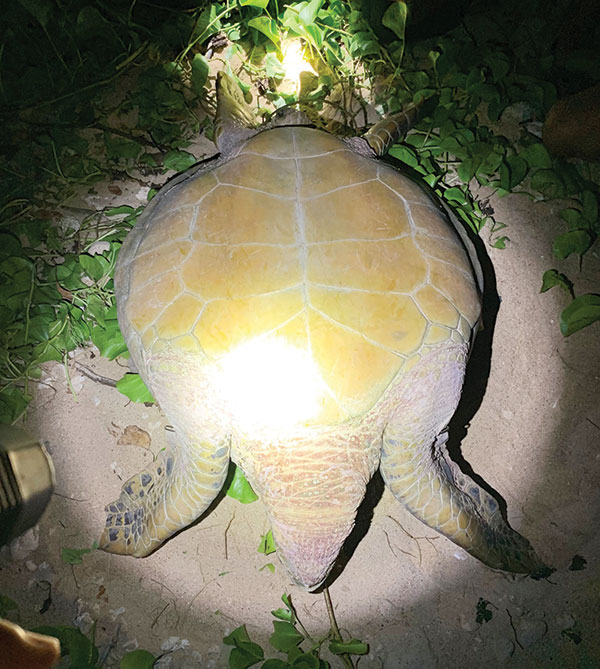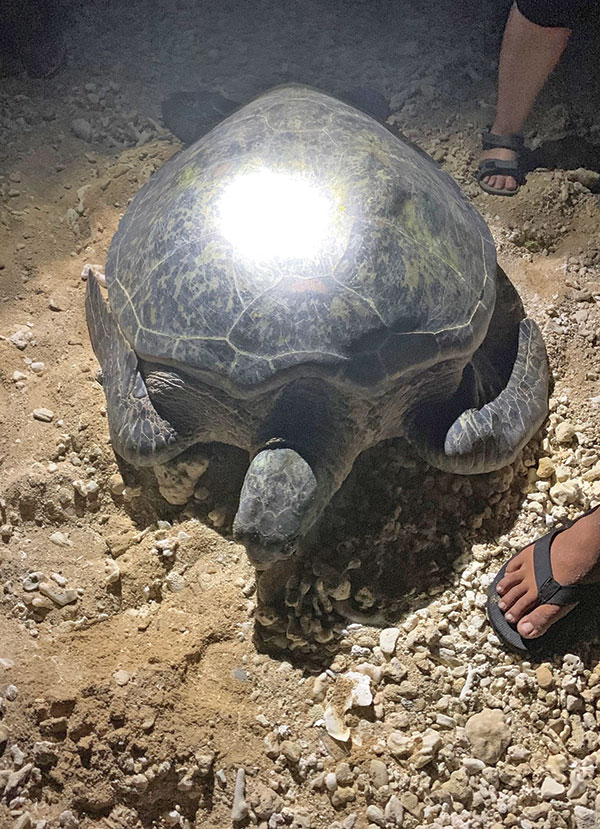Sea turtle saved from poacher in the nick of time

These photos on the Facebook page of the CNMI Sea Turtle Program of the Department of Lands and Natural Resources shows a sea turtle that had been flipped over by an unknown poacher or poachers last June 18. (Contributed Photos)
The CNMI Sea Turtle Program of the Department of Lands and Natural Resources is appealing to the public not to disturb sea turtles that are visiting their nesting grounds in the CNMI.
This comes in the wake of a recent incident, as reported in its Facebook page, that an unknown poacher or poachers disturbed a sea turtle at its nesting ground last June 18.
The turtle, which was about to lay her eggs, had been flipped over. This indicates that the turtle was about to be poached, according to Endangered Species Program manager Lisa Sztukowski.
She said the turtle was found by their Sea Turtle team, which also saw someone fleeing the scene. However, they were unable to get a clear description of the individual because they have not seen the turtle yet.
“We believe that the police came around shortly before the crew showed up and that scared the individual off,” Sztukowski added.
The turtle had no signs of harm and was tagged before it was released and headed back to the beach.
According to the program’s Facebook page, the sea turtle staff came across the flipped green sea turtle on one of Saipan’s east side beaches. It says that there remains only about 12 turtle nesting sites on Saipan.
Sea turtles almost always return to the exact same beach where they were born to lay their clutch of eggs. This means, sea turtles born elsewhere in the world will not come to lay their eggs in the Marianas.
The Sea Turtle Program has also been providing outreach and educational programs about the safety of the sea turtles. These efforts are made to inform the community about poaching of endangered animals.
“There are more than 20 nesting sites that we know of around the island, and there are possibly more,” DLNR Secretary Anthony Benavente said. “If we have 1,000 [turtle eggs], and take out 10, we are still hurting their population.”
The Sea Turtle Program seeks to move sea turtles up to the protected species list but that could take a long time. Benavente describe the timeline to be at least more than 10 years in order to reach that progress.
The green sea turtle is listed as an endangered specie. According to Sztukowski, turtles can take more than 20 years to fully mature and lay eggs. Sea turtles typically live between 30 and 50 years.
Anyone who has any information about any poached turtles or any suspicious activities that result in the injury/death of a turtle are urged to contact the Sea Turtle Stranding Hotline at (670) 287-8537. Calls are anonymous and lines are open 24/7.
























